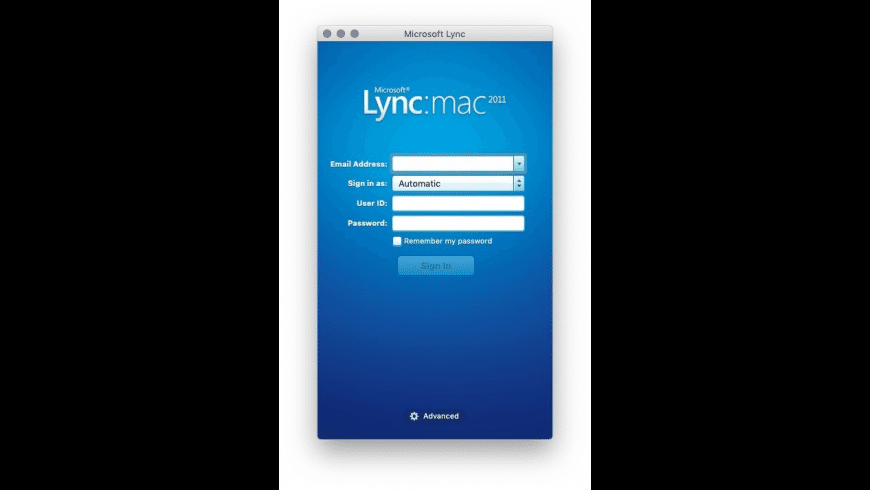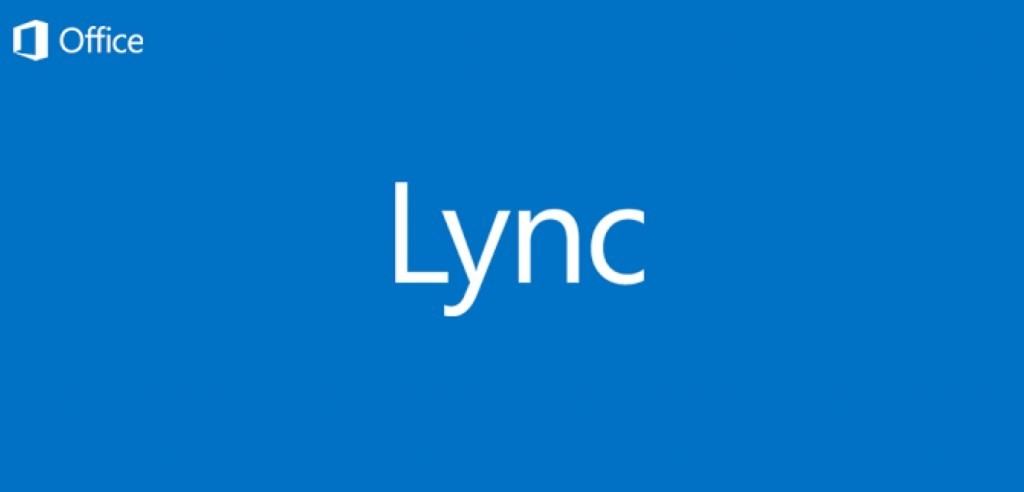I've been having this issue for quite some time as well, and have been working with a Microsoft Skype for Business (SfB) support engineer on it. To be certain it's the same, or similar-enough issue, here's the setup I've been working with (or against it seems):
Start Lync for Mac, and then sign in to Skype for Business Online. On the Lync for Mac menu, click Preferences, click Account, and then clear the Use Microsoft Exchange for managing personal information check box. Note You must perform step 3 quickly after you sign in. Collect log files and system information for Lync for Mac issues. IS&T teams have not yet identified the cause of the incident, but are investigating. Additional Information The current workaround is to install the Mac version of Skype for Business. Next Update: Upon resolution. Installation Type page, select Install and the Lync 2011 Installer will begin installing the program on your Mac. After the installation is finished you will be brought to a screen saying the installation was successful, click Close and you will now see a Microsoft Lync 2011 icon in your Mac’s application dock such as the one below.
* Skype for Business 2016 (any version, including latest in the insider 'Fast Ring' releases)
* Macbook Pro - Early 2011
* OS X 'El Capitan' - v10.11.6
* Corporate domain is on Azure AD (Active Directory)
* When signing in with the AD account, you are either a) Given a choice between 'Work or school account' or 'Personal account), b) usually automatically redirected to the company branded signon page.
If that matches up, the next step is to check the certificate which is on domain's federation services (ADFS) host. This may require getting IT involved to find it, or reviewing the SfB logs.
When you get the host name, for example, 'adfs.mycompany.com', go to that address via HTTPS in Safari. So you'd go to 'https://adfs.mycompany.com'. Once there, click on the lock to the left of the address in the address bar and click the 'Show Certificate' button. Make sure that the selected certificate, in the tree view at the top, is the bottom-most one. The bottom pane should show some brief certificate info (Issued by, Expires, 'This certificate is valid' type message, etc.). Expand the 'Details' section in that lower pane, and look for the 'Signature Algorithm' line, which should be, roughly, the 12th one down. If on that line, you have something similar to 'SHA-512 with RSA Encryption' (forget about the long number afterward), then that is the source of the issue with logging on, and also, activating Office 365 (if you have a company account for it).
OS X prior to 10.12 (Sierra) does not *natively* support 512 bit certificate signatures. So while browsers and everything else shows that, yes, the certificate is good, valid, unexpired, etc, the low level network stack in OSX, which is used by SfB to initially connect, does not, so it cannot validate that the certificate is valid, thus causing this issue.



Unfortunately, at this time, there doesn't appear to be a way to wedge in support for 512 algorithms in OSX, and that includes forcibly upgrading/linking openssl. The only way I've found to date, to use SfB on anything less than 10.12.x, is to essentially MITM yourself, using a proxy application, such as Charles, which will create its own fake certificate which you must trust, to connect.
I apologize for such a long writeup, but given that despite my hours and hours and hours spent over months of researching the issue, I hope to provide as much useful and helpful information as possible for any future Googlers/Bingers/DuckDuckGoers/etc.
All Library staff, along with some public service desks, are able to access the Lync 2010 or 2013 software
When you open up Lync, you will see a screen similar to the one below:
or Skype for Business:
Your sign in address is: first.last@uconn.edu
Check UConn's Phonebook to see how your name is listed.
Enter your NetID's password for the password.
Then simply hit the 'Sign In' button and Lync will automatically log in.
Signing in with Office Communicator 2011 on Mac OS X
If you're using Office Communicator 2011 on Mac OS X, you'll need to use the following settings:
- E-mail address: first.last@uconn.edu (example: john.doe@uconn.edu)
- User ID: (example: libraryjdoe)
- Password: Your NetID password

Lync 2011
It appears that there is a bug with the 2011 Lync for OS X client. Domains that aren't engineering and have a trust with us fail to autodetect the correct settings (i.e. lib.uconn.edu and business.uconn.edu are going to have issues on Mac only).
To fix, go to advanced settings at the bottom of the sign in window. Select manual server settings and enter 'sipexternal.engr.uconn.edu' for external server and 'lync.ad.engr.uconn.edu' for internal server settings.
Should connect just fine after that.
Lync Web App Mac
How to use Lync
After you've logged into Lync, you'll see the main Lync window (as seen above.
Your presence indicates to others your real-time availability by displaying one of a number of different colors next to your name. Lync 2010 automatically sets your presence based on your activity and your Microsoft Outlook calendar. For example, if you step away from your computer for a while, Lync will automatically change your presence to Away (yellow), indicating to others that you are not available for instant messaging, video, etc. Similarly, if your Outlook calendar indicates that you are in a meeting, Lync will automatically set your presence to Busy (red), so that people in your contact list know that you're unavailable.
You can manually change your presence by clicking on the availability menu under your name, and then selecting a different status, such as Busy, as shown above.
Adding To Your Contact List
Now that you're able to to control how others view your presence in Lync, it's time to find other coworkers using Lync and add them to your contact list. The easiest way to do this is to earch for them in the search box, as seen below:
Microsoft Lync For Mac
In this example I typed in 'rick' and I was able to see two different results, Rick O'Toole and Fred Rick.
Download Lync For Mac
Rick O'Toole is online and using Lync, so I'd like to add him to my contact list. I can do this by clicking on the arrow next to their name and selecting a contacts group to add them to, such as All Contacts. I can also create a new group using the Add to New Group option.
Lync For Mac 2011
